Good morning Forum Friends
Cedar Creek is looking fantastic with the recent rains, which makes going into the summer months much less intimidating. The other added bonus is water temperature, which is still holding in the low 80s as the nights remain cool for now. The high water levels and the added oxygen are allowing for a solid white/hybrid bite, which makes the lake even more enjoyable for those getting out here this summer.
Although the water temperatures are very low for this time of year, the fish are still transitioning to a horizontal bite, as they usually do in the summer months. What I mean by a horizontal bite is that the fish are preferring the lure to be moving sideways, as opposed to the traditional vertical slabbing. This horizontal pattern usually holds through sometime in September, when the fish return to actively feeding throughout the day, and will again hit a vertically fished slab.
The nice thing about summer is the consistency of the weather and the fishing. For the next few months, the fish will pretty much be found in the same areas and at the same depths, day after day. Although there is the occasional exception to this rule, you can count on very large schools being found on the windy side of your favorite humps and points, almost without fail. Right now, mostly due to where we operate on the lake, we are fishing the Sunken Island, the Tennis Court, Enchanted Hump, the Spillway Hump, and Game Warden's Point. Basically, I'm looking on any hump or point in 12-20ft of water. I know that sounds like a lot of options, but Cedar Creek is known for it's large numbers of sandies, and all of these spots have been producing here as of lately.
What I'm looking for in these areas is a lot of of closely knit matter directly relating to the bottom. I'll approach the target area from an upwind direction, that way I can go directly across where I plan on fishing. I will drive slowly towards the windward side of a hump/point, and will be paying close attention to my graph. Once I get around 18-20ft, I'm watching the bottom and looking for what looks like molded balls of clay on a traditional sonar. If you have side scan, these schools will look like hundreds of tiny white dots off to your left or right. Once I start seeing a lot of matter on the bottom, I throw out my marker buoy, circle around, and start fishing.
There are a number of ways the angler can go about catching these fish, and picking a method really just depends on what instills the most confidence. If you like the traditional slab, no problem. Although I would recommend smaller models as the larger ones tend to fall a little too fast in the summer. If fishing a slab, cast it upwind of the school, let it hit the bottom, reel in slowly for 3-5 turns, then let the slab return to the bottom. Pay attention as the slab falls, this is usually the time when you'll get bit. Sometime all you'll get is a twitch in the line, which is the fish picking the bait up as it falls.
If you prefer an inline spinner such as a Mepps or a Rooster Tail, the technique is very much the same as the angler will again be casting upwind of the school. In this instance, I recommend the 3-5 turns be reeled in VERY slowly. What you want to have happen is that blade sending out very strong, pulsing vibrations as your reel. After 3-5 slow turns of the reel, stop, and let the lure fall back to the bottom. Again, be watching your line for twitches, as it is very common for the fish to hit the lure on the fall.
The way we have been putting our clients on fish differs a little from the above two methods, but the idea is still the same. Constant contact with the bottom and a slow falling presentation is key. We're using ulra-light rod and reels (a heck of a lot more fun) with light tackle and small test line. What we're having our clients do is dropping a CR Special Thump Buddy straight down to the bottom, picking it up slowly 18-24" off the bottom, pausing three seconds, then slowly dropping the jig back to the bottom. As the captain, I'm allowing the boat to slowly drift with the wind, so as to accomplish two things: One, we're covering a lot of ground. Two, we're naturally presenting our baits in a horizontal manner. Again, the angler is going to need to watch their line on as the jig falls. Although you'll catch a good number of fish raising the bait off the bottom, you can double your take home by learning how to catch fish on the drop.
***Guide Tip: If you feel any bite at all right now, set the hook. The fish are not hitting as aggressively as they usually do in the spring or fall.***
This is what we're using:
CR Special Thump Buddy on an 1/8th ounce collarless jig head. Both from
www.constantpursuitoutfitters.com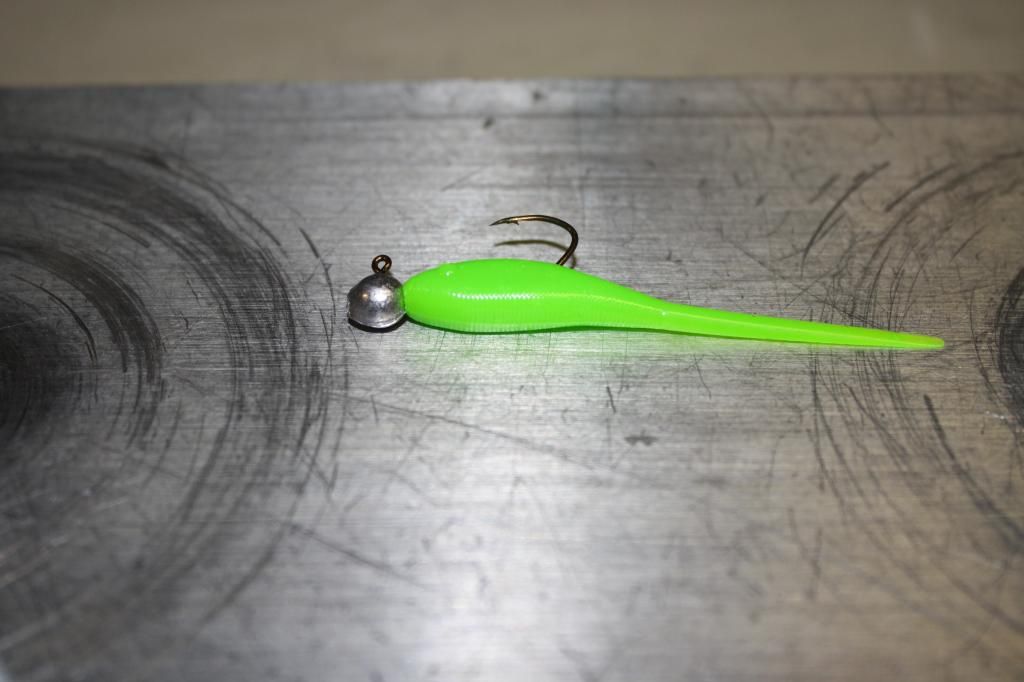
Here are a few of our recent outings:
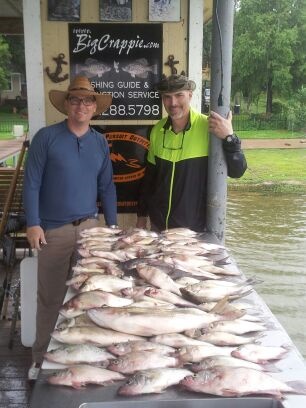
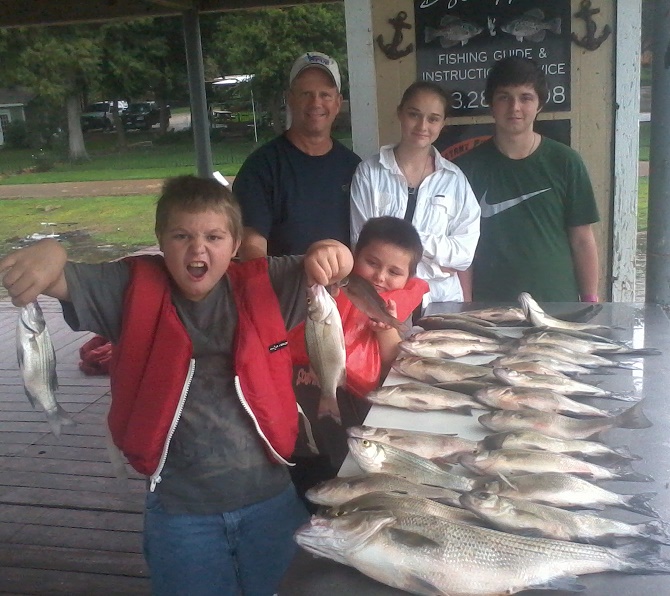
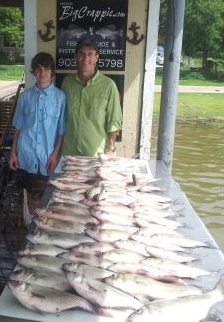
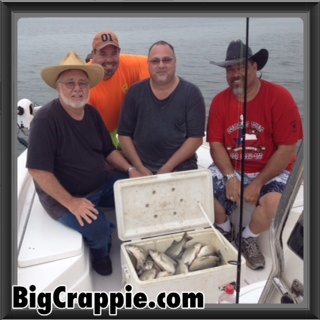

There are a lot more pictures to be found at
www.bigcrappie.com.If you need any help at all finding these locations, feel free to PM me and I will do my best to point you in the right direction. As the summer months continue to develop, trolling will be tough to beat. I will do another report when that time comes, giving my best instructions in accordance to how we're going about catching fish. Until then, good luck everybody, and thank you very much TFF for your support!

